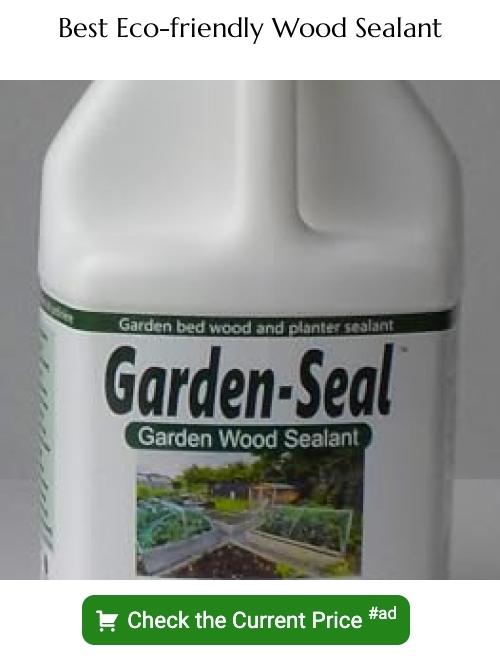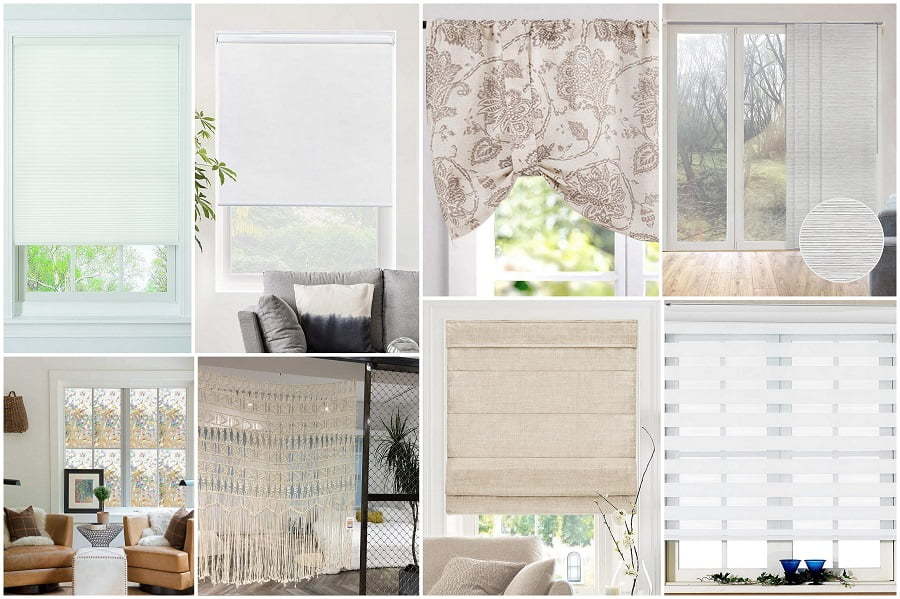Last updated on
Discover the world of eco-friendly and durable alternatives to pressure treated wood, perfect for your next construction or landscaping project.
If you’re a homeowner, you know that wood is one of the most versatile and beautiful materials to use in your home decor. From floors to furniture, it adds warmth and texture to any space.
However, using pressure-treated wood can be harmful to your health and the environment. Luckily, there are plenty of alternatives out there that are just as stunning without the negative side effects.
In this article, we’ll explore some creative ways to incorporate eco-friendly materials into your home decor without breaking the bank. So let’s dive in!
Overview of Pressure Treated Wood

Pressure treated wood is a popular choice for outdoor construction projects such as decks, fences, and retaining walls. It’s created by injecting chemicals into the wood to make it resistant to rot and insect damage.
However, this process can have negative effects on both human health and the environment. The chemicals used in pressure-treated wood contain toxic substances that can leach out over time or be released when burned or disposed of improperly.
In addition to these concerns, there are also aesthetic considerations with pressure treated wood. While it may look great initially, over time it tends to fade and lose its color due to exposure from sunlight and weathering.
Fortunately, there are many alternatives available that offer similar durability without the harmful side effects of pressure-treated lumber.
Common Concerns With Pressure Treated Wood

It comes with some common concerns that homeowners should be aware of. One of the biggest concerns is the use of chemicals in pressure-treated wood to prevent rot and insect damage.
The most commonly used chemical in pressure-treated wood is chromated copper arsenate (CCA), which has been linked to health problems such as cancer.
Another concern with pressure treated wood is its impact on the environment. CCA-treated lumber cannot be burned or recycled due to its toxic nature, so it must be disposed of properly at a hazardous waste facility.
In addition to these health and environmental concerns, there are also aesthetic issues associated with using pressure treated lumber. Over time, it can warp or crack due to exposure to moisture and sunlight.
Health Concerns and Precautions
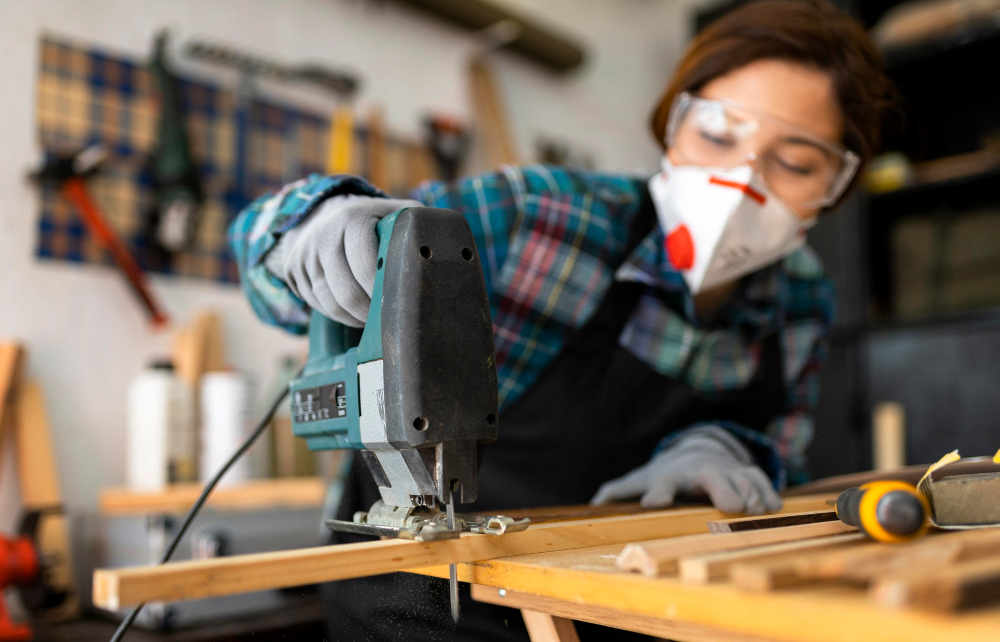
The chemicals used in the treatment process can leach out over time and pose a risk to your health if you come into contact with them. This is especially true if you’re working with the wood on a regular basis or have children who play near it.
To minimize your exposure to these harmful chemicals, there are several precautions that you can take when handling pressure treated wood. First and foremost, always wear gloves and protective clothing when working with this type of material.
You should also avoid cutting or sanding the wood indoors where dust particles could become airborne.
If possible, try to use alternative materials for projects where people will be in close proximity to the finished product such as decks or playground equipment.
Environmental and Health Considerations
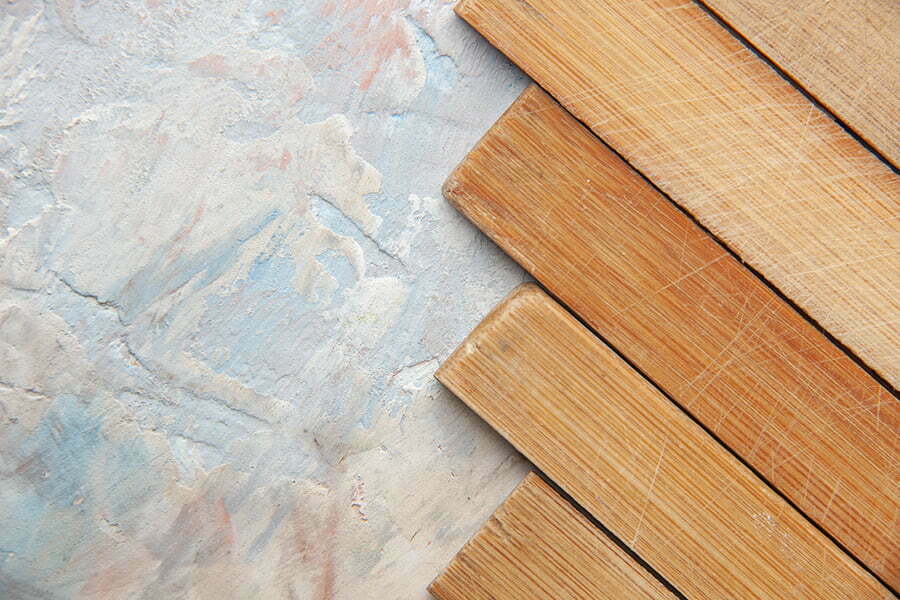
The chemicals used in the treatment process can leach into soil and water, posing a risk to both human health and wildlife. Burning or disposing of pressure-treated wood can release toxic fumes into the air.
Fortunately, there are many eco-friendly alternatives available that don’t pose these risks. From naturally rot-resistant woods like cedar and redwood to composite decking materials made from recycled plastics, there’s no shortage of options for those who want beautiful home decor without sacrificing their values.
It’s important to consider not only your own health but also that of future generations when making decisions about what materials you use in your home projects.
Proper Disposal of Pressure Treated Wood
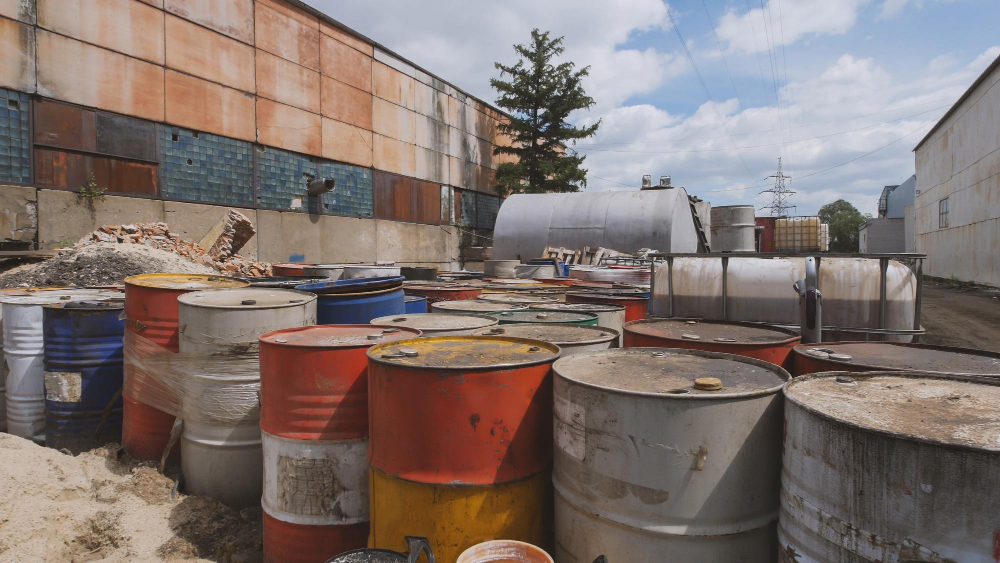
This type of wood contains chemicals that can be harmful to both humans and the environment if not disposed of correctly. Burning or landfilling pressure treated wood is illegal in many areas due to the release of toxic fumes and leaching into groundwater.
The best way to dispose of pressure-treated lumber is by taking it to a hazardous waste facility or contacting your local municipality for guidance on how they handle this type of material. Some cities offer special pick-up services for large items like old decks or fences made from this material.
By properly disposing of your old pressure-treated lumber, you’re doing your part in protecting yourself and the environment from potential harm caused by these chemicals.
Non-toxic Alternatives to Pressure Treated Wood

One popular choice is cedar, which is naturally resistant to rot and insects. It’s also lightweight and easy to work with, making it an ideal material for outdoor furniture or decking.
Another option is redwood, which has similar properties as cedar but tends to be more expensive. However, its natural beauty makes it worth the investment if you want a stunning addition that will last for years.
For those who prefer a darker wood tone without using chemicals or stains on their projects can opt-in tropical hardwoods like Ipe or Cumaru that have high density and resistance against decay.
Bamboo lumber has become increasingly popular in recent years due to its sustainability factor; bamboo grows quickly compared with other trees used in construction materials such as oak or pine while being stronger than steel by weight ratio. Other alternatives include recycled plastic lumber made from post-consumer waste products like milk jugs and soda bottles; concrete pavers designed specifically for use on decks offer durability without sacrificing style; composite decking materials made from recycled plastics mixed with sawdust provide the look of real wood without any harmful chemicals involved in production process.
There are many non-toxic alternatives available when choosing building materials instead of pressure-treated woods.
Untreated Natural Wood Options

It’s eco-friendly, affordable, and can be used in many different ways. Cedar and redwood are two popular choices for outdoor projects because they’re naturally resistant to decay and insects.
They also have a beautiful color that ages well over time.
Pine is another option that’s widely available and budget-friendly. While it may not be as durable as cedar or redwood, it can still last for years with proper maintenance like regular staining or sealing.
When using untreated natural wood outdoors, keep in mind that it will weather over time due to exposure to the elements. This can add character but may require more frequent maintenance than other options.
Naturally Rot-Resistant Wood Types
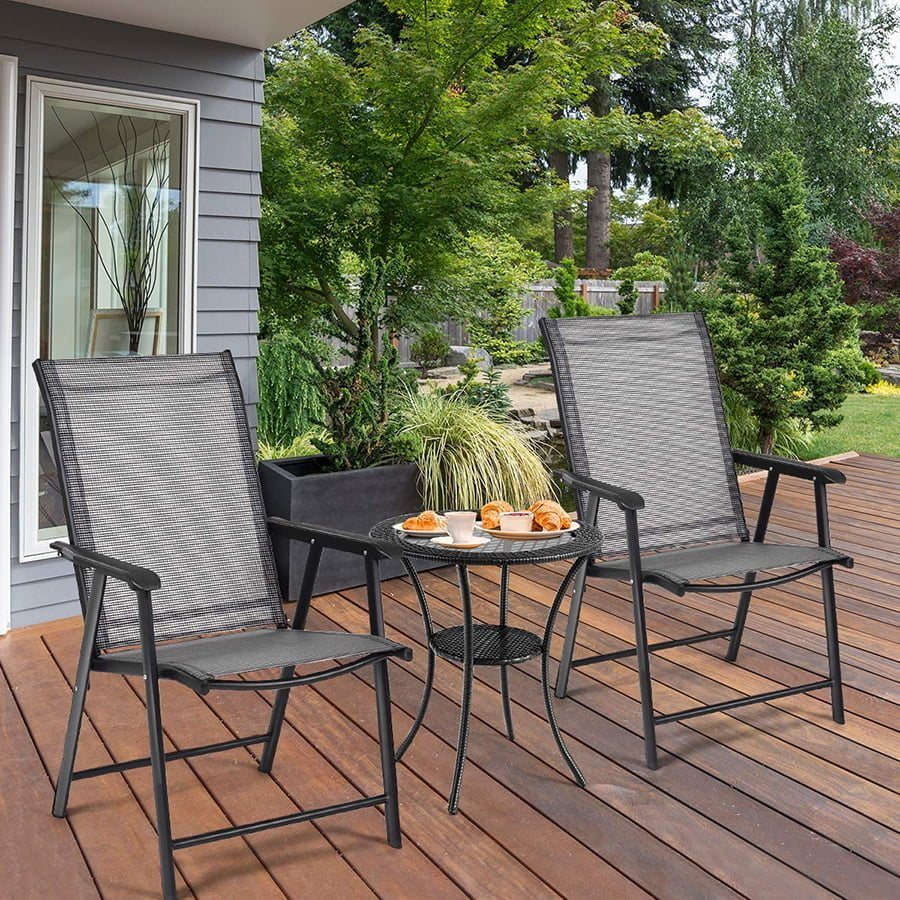
These woods have natural oils and resins that make them resistant to decay, insects, and fungi. They also require little maintenance compared to other types of wood.
Some examples of naturally rot-resistant woods include cedar, redwood, cypress, and black locust. Cedar is a popular choice for outdoor furniture because it has a beautiful grain pattern and is lightweight yet durable.
Redwood is another excellent option due to its rich coloration that can add warmth to any space.
Cypress has been used for centuries in construction due to its durability against moisture damage while black locust’s strength makes it ideal for fence posts or decking material.
Decay-resistant Wood Species
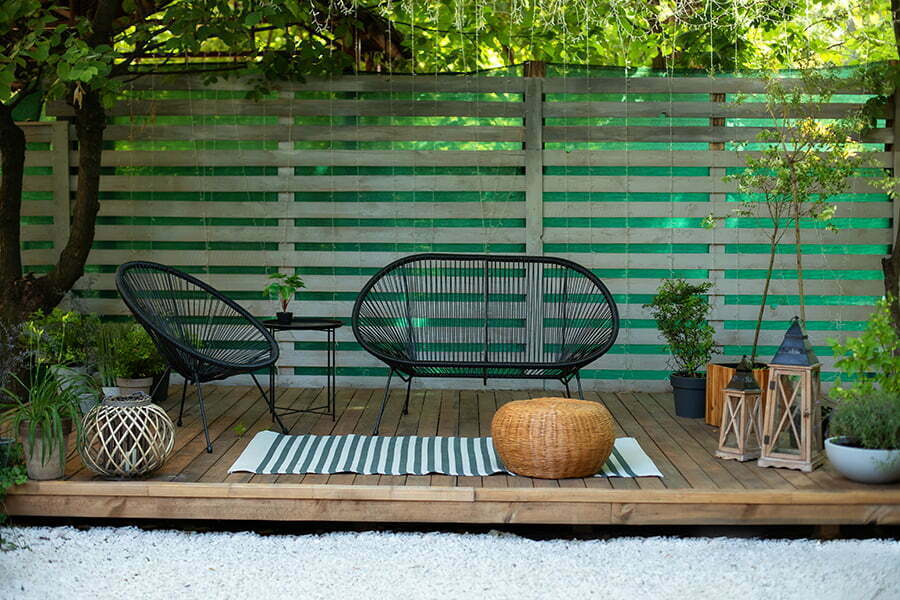
These types of woods have natural properties that make them resistant to decay and insect damage, making them ideal for outdoor use. Some popular options include cedar, redwood, cypress, and teak.
Cedar is a softwood that has natural oils which repel insects and prevent rotting. It’s also lightweight and easy to work with.
Redwood is another softwood that has similar properties as cedar but is more durable due to its higher density.
Cypress is a hardwood known for its resistance to decay caused by moisture exposure. It’s commonly used in boat building because of its ability to withstand water damage.
Teak is an exotic hardwood with high oil content which makes it naturally resistant against rotting caused by moisture exposure or insect infestation. Its durability makes it perfect for outdoor furniture or decking projects where longevity matters most.
When choosing the right type of decay-resistant wood species for your project, consider factors such as cost-effectiveness, availability in your area or region you live in (some woods may not be available everywhere), sustainability practices during harvesting process etc.
Alternative Wood Preservatives

One of the most popular is using natural oils like linseed oil or tung oil. These oils penetrate deep into the wood fibers, providing long-lasting protection against moisture and decay.
Another option is using vinegar or borax solutions as a preservative. Vinegar can be used to prevent mold growth on wooden surfaces while borax acts as an insecticide that repels termites and other pests.
Copper-based preservatives are also gaining popularity in recent years due to their effectiveness in preventing rot, decay, and termite damage without posing any significant health risks. Copper naphthenate is one such copper-based alternative that has been proven effective at protecting outdoor structures from weathering effects.
Heat-Treated Wood

This process involves heating the wood to high temperatures in a low-oxygen environment. The heat changes the chemical structure of the wood and makes it more resistant to decay and insects.
One of the benefits of using heat-treated wood is that it doesn’t require any chemicals or preservatives, making it an eco-friendly option for your home decor projects. It’s also lightweight and easy to work with compared to other types of treated lumber.
Another advantage is its durability; heat-treated woods can last up 25 years without rotting or warping when properly maintained. They are ideal for outdoor use such as decking, fencing, siding or garden furniture.
While this type of material may be slightly more expensive than traditional pressure treated lumber upfront due its manufacturing process being energy-intensive , you’ll save money over time by not having replace rotted boards every few years like you would with untreated natural woods.
Acetylated Wood
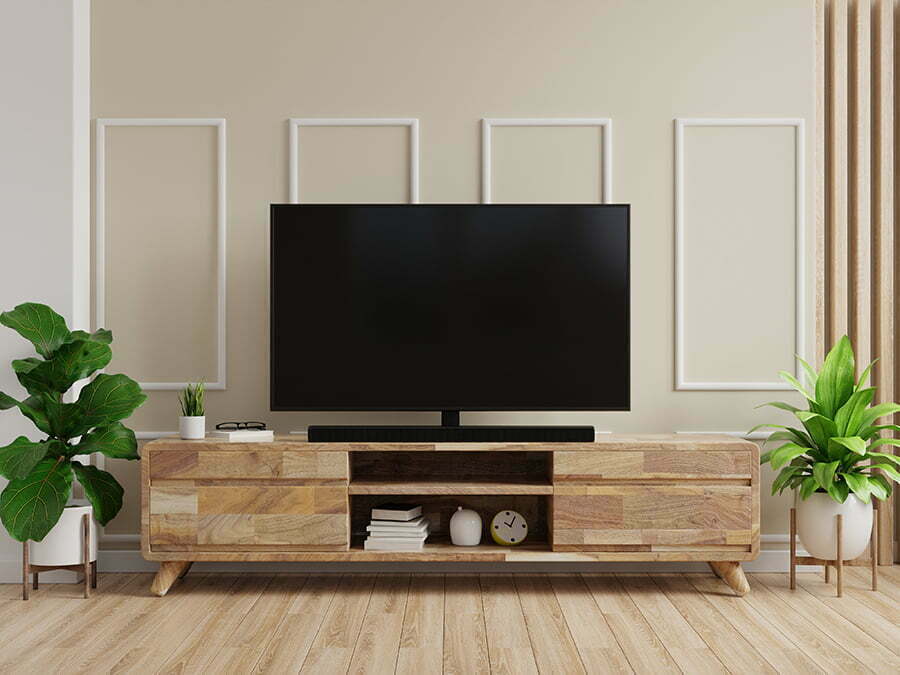
This process involves treating the wood with acetic anhydride, which changes the chemical structure of the cell walls in the wood, making it more resistant to moisture and fungal growth.
One major advantage of using acetylated wood is that it does not contain any harmful chemicals or toxins, making it safe for use in indoor applications such as flooring or furniture. It also has a natural appearance similar to untreated natural woods like cedar or redwood.
While acetylated wood can be more expensive than traditional pressure-treated lumber, its long lifespan and low maintenance requirements make it a cost-effective choice over time. Because this type of treatment alters only the surface layers of cells within each piece rather than penetrating throughout like some other treatments do (such as CCA), there are no concerns about leaching into soil or water sources when used outdoors.
Modified Wood
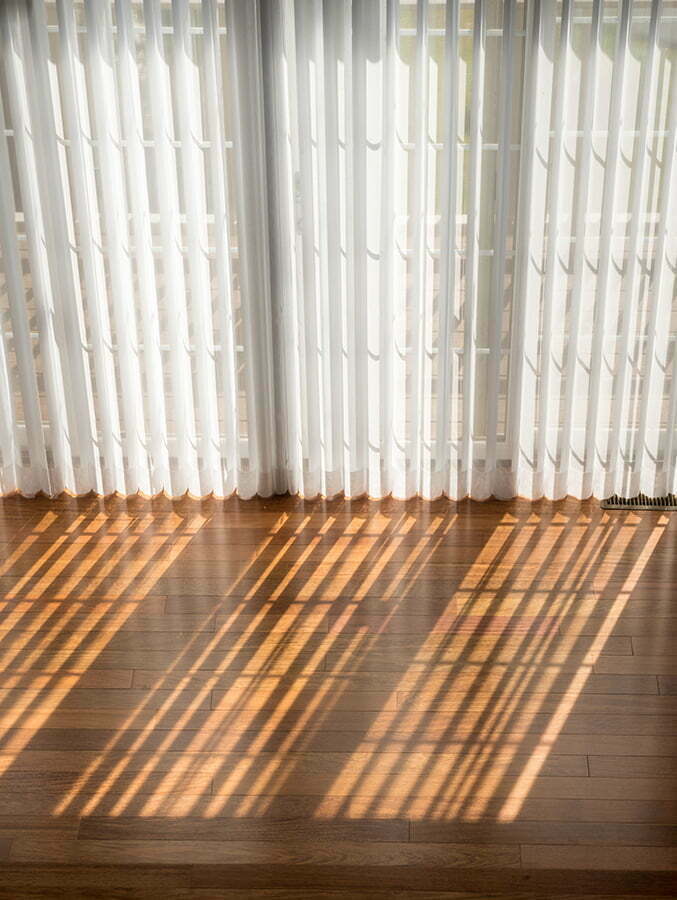
Modified wood is created by using a chemical process that changes the structure of the wood, making it more resistant to decay and insects. This type of treatment can also improve its dimensional stability, which means it’s less likely to warp or crack over time.
One popular type of modified wood is thermally modified timber (TMT). TMT involves heating the lumber in a kiln at high temperatures without oxygen until all moisture has been removed from the cells.
The result is an incredibly durable and stable product that requires no additional chemicals for preservation.
Another form of modification involves impregnating natural woods with synthetic resins under high pressure and temperature conditions. This process creates highly durable materials with improved resistance against rotting, warping, cracking or insect damage.
While these types of treatments are relatively new on the market compared to traditional methods like pressure treating or painting/staining; they have quickly gained popularity among homeowners looking for eco-friendly alternatives that don’t compromise on quality or aesthetics.
Borate-Treated Wood
Borate is a naturally occurring mineral that has been used for centuries as a natural insecticide and fungicide. It’s also non-toxic to humans and animals, making it an ideal choice for those who are concerned about the health risks associated with traditional pressure-treated lumber.
Borate treatment involves soaking the wood in a solution of borate salts, which penetrates deep into the fibers of the wood. This creates a barrier against insects like termites and carpenter ants, as well as fungi that can cause rot.
One advantage of borate-treated wood over other alternatives is its affordability. It’s typically less expensive than some other options like modified or acetylated woods.
However, there are some downsides to consider when using borate-treated lumber. While it does provide protection against insects and decay, it may not be suitable for use in areas with high moisture levels or where direct contact with water occurs regularly since this can wash away the protective layer created by borates over time.
Composite Decking Materials
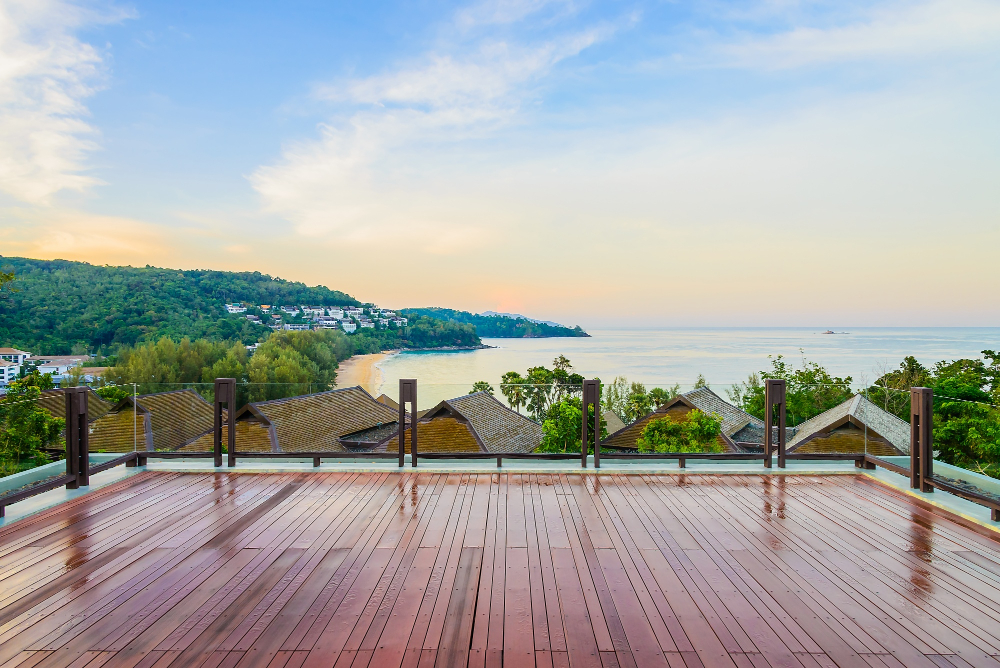
They are made from a combination of recycled plastic and wood fibers, making them eco-friendly and durable. Composite decks require less maintenance than traditional wooden decks, as they do not need to be stained or sealed regularly.
They also resist fading, staining, scratching and mold growth.
One of the biggest advantages of composite decking is its longevity; it can last up to 25 years with proper care. It’s also available in many colors and styles that mimic the look of natural wood grain without any splinters or warping.
However, there are some downsides to consider when choosing composite decking materials over traditional lumber options: they tend to be more expensive upfront than other alternatives like untreated natural woods or concrete pavers for patios; they may become slippery when wet which could pose safety concerns especially around pools areas; finally their installation requires special tools which might add extra costs if you’re planning on doing it yourself.
Wood-Plastic Composites

They are made by combining recycled plastic with wood fibers or sawdust, creating a material that is both durable and eco-friendly. WPCs come in a variety of colors and textures, making them an attractive option for decking, fencing, and other outdoor projects.
One of the benefits of using WPCs is their resistance to rotting and insect damage. Unlike traditional wood products that require regular maintenance such as staining or sealing to prevent decay from moisture exposure over time; WPC’s do not need any special treatment beyond occasional cleaning.
Another advantage is their low environmental impact since they use recycled materials instead of virgin timber which reduces waste going into landfills while also reducing deforestation rates worldwide.
While the initial cost may be higher than traditional lumber options like pressure-treated pine or cedar; it can save you money in the long run due to its durability without requiring frequent replacement costs associated with natural woods susceptible to rotting over time.
Recycled Plastic Lumber
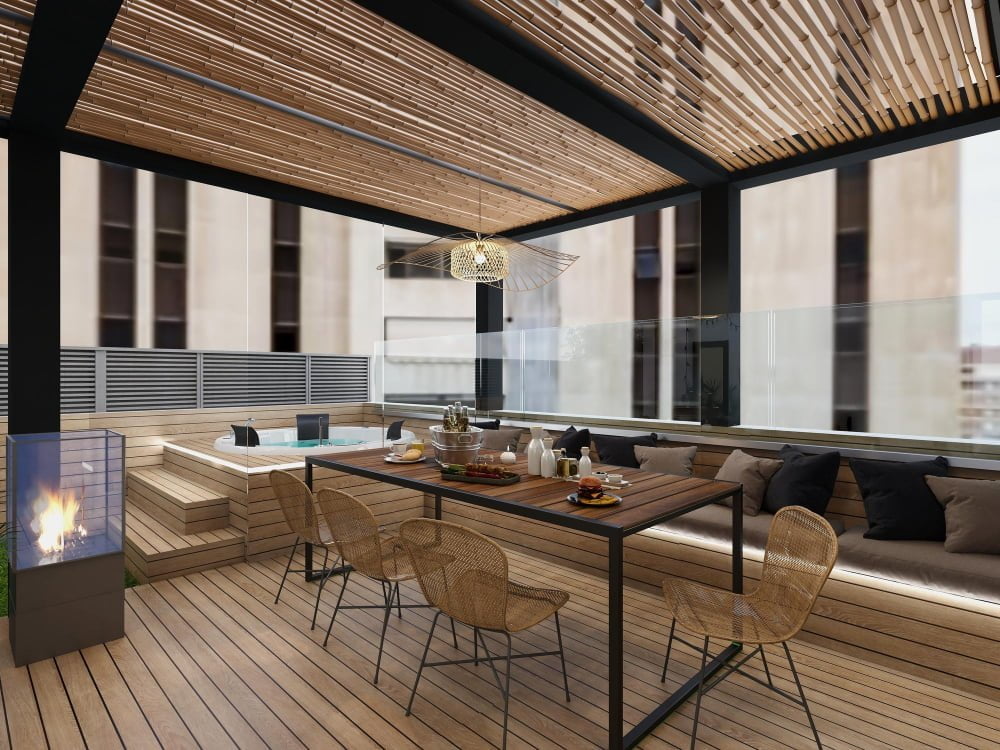
It’s made from recycled plastic and can be used for many different applications, including decking, fencing, and outdoor furniture. This material is durable and long-lasting, making it an excellent choice for those who want to reduce their environmental impact while still enjoying the beauty of natural wood.
One of the benefits of using recycled plastic lumber is that it doesn’t require any maintenance or treatment like traditional wood does. It won’t rot or decay over time either since it’s resistant to moisture damage and insect infestations.
Another advantage of this material is that it comes in a variety of colors so you can choose one that matches your home decor perfectly. Plus, you’ll never have to worry about painting or staining again!
While recycled plastic lumber may cost more upfront than pressure-treated wood options initially; however in the long run they are much cheaper as they do not need regular maintenance nor replacement due to rotting issues which makes them an eco-friendly option with low lifetime costs.
Concrete and Stone Alternatives
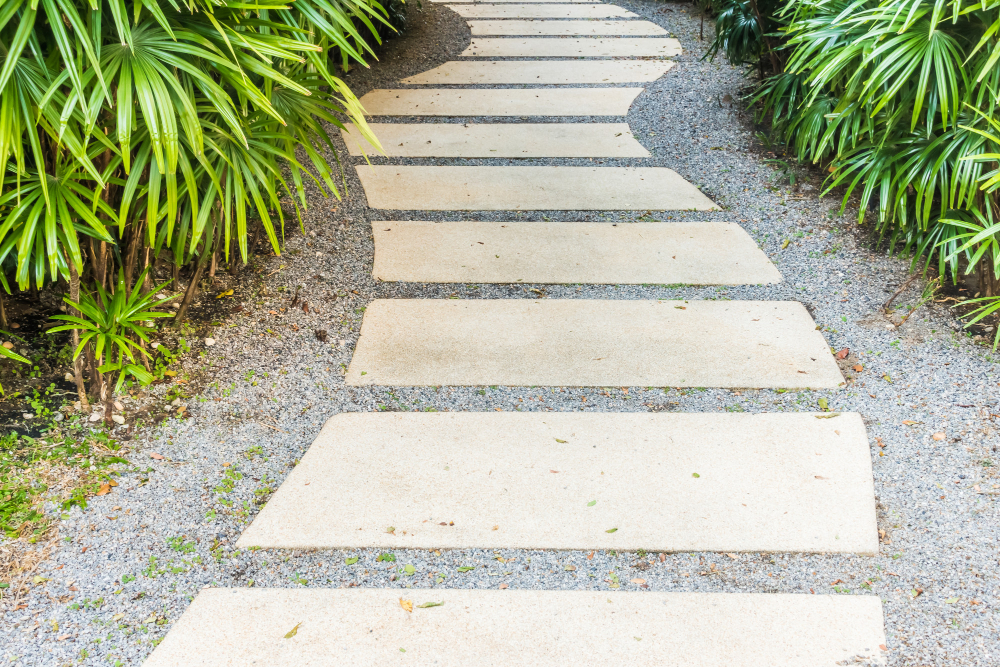
They can be expensive to install and require regular maintenance. Fortunately, there are alternative materials that offer similar durability without the high cost or upkeep.
One option is using pavers made from recycled rubber or plastic. These come in a variety of colors and patterns to match any design aesthetic while being eco-friendly.
Another option is using stamped concrete overlays that mimic the look of natural stone at a fraction of the cost. They’re also low-maintenance since they don’t require sealing like traditional concrete does.
For those who prefer an organic look in their landscaping design, consider incorporating gravel paths or mulch beds instead of hardscaping with concrete or stone altogether.
Tile and Pavers for Decks
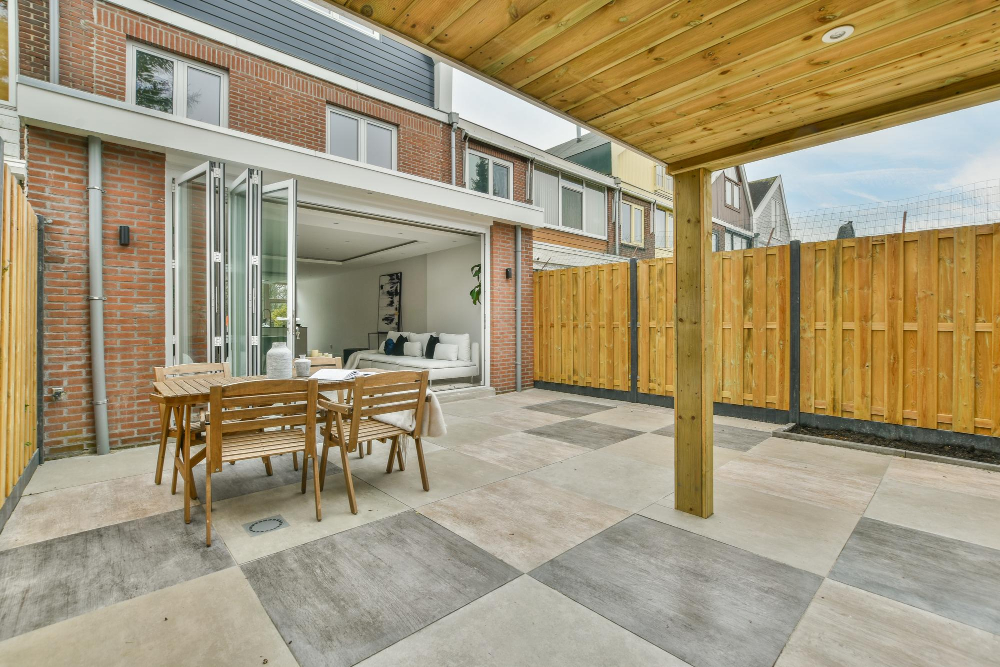
They offer durability, low maintenance, and come in a variety of colors and patterns that can complement any home decor style. Plus, they’re eco-friendly since they don’t require the use of trees or chemicals for preservation.
One popular option is porcelain tile which is resistant to scratches, stains, fading from UV rays and moisture damage. It’s also slip-resistant making it perfect for pool decks or areas with high foot traffic.
Another option is natural stone pavers such as granite or slate which provide an elegant look while being durable enough to withstand harsh weather conditions without cracking or chipping.
Both tile and paver options can be installed over existing concrete surfaces so you won’t have to worry about removing your old deck entirely before installing them. This makes the installation process quicker than other alternatives like composite decking materials that require more preparation work beforehand.
Cost Comparison of Alternatives
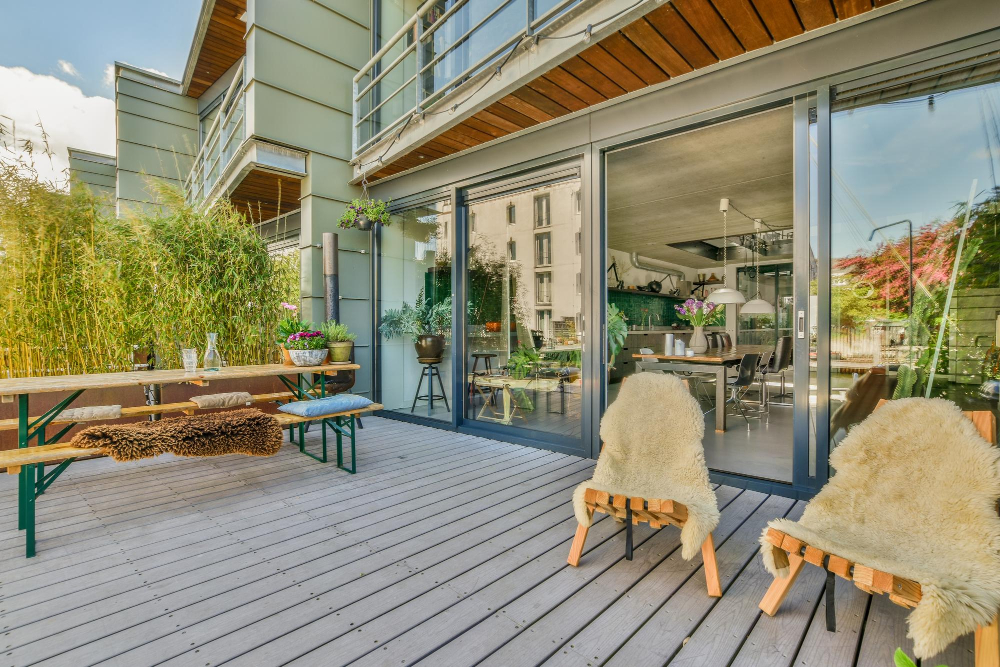
While eco-friendly alternatives may seem more expensive at first glance, they can actually save you money in the long run. For example, untreated natural wood options like cedar and redwood are more expensive than pressure-treated lumber but last longer and require less maintenance over time.
Other alternatives like heat-treated wood or acetylated wood may have a higher upfront cost but also offer greater durability and resistance to decay. Composite decking materials made from recycled plastic or reclaimed sawdust are another option that can be cheaper than traditional hardwoods while still providing an attractive finish.
It’s important to weigh the initial costs against long-term savings when considering alternative options for pressure treated wood. By investing in durable and sustainable materials now, you’ll not only create beautiful home decor but also contribute positively towards environmental conservation efforts while saving money on future repairs or replacements down the line.
FAQ
What can I use instead of pressure treated wood for deck framing?
Alternative materials for deck framing include rot-resistant species like western red cedar and redwood, as well as galvanized steel with protective layers for corrosion resistance.
What is better than treated lumber?
Cedar is better than treated lumber due to its durability, sustainability, and lower long-term maintenance costs.
Do I really need pressure treated wood?
Yes, you need pressure-treated wood for situations involving direct contact with moisture sources, such as retaining walls, or when wood is in contact with the ground or buried underground.
Are there eco-friendly alternatives to pressure treated wood for outdoor projects?
Eco-friendly alternatives to pressure-treated wood for outdoor projects include using reclaimed wood, recycled plastic lumber, and naturally rot-resistant wood species like cedar and redwood.
How does the durability of non-treated wood types compare to pressure treated lumber?
Non-treated wood types generally have lower durability compared to pressure treated lumber.
Can certain wood preservation methods be used to enhance the longevity of untreated wood?
Yes, certain wood preservation methods can indeed enhance the longevity of untreated wood.
Recap
